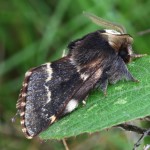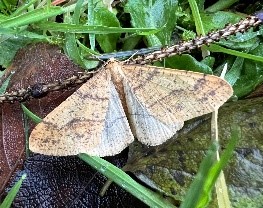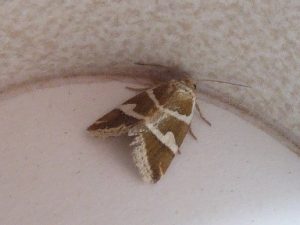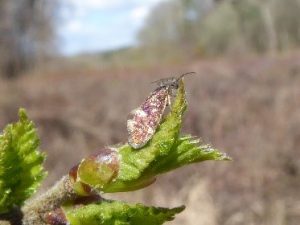Mike Halsey writes…
A short report this time, with significantly less activity than in the summer months. In the last report, written in mid-October, I made mention of having just witnessed the ‘first frosts of Autumn’. Since then, temperatures have been ‘unseasonably mild’ (although what we are experiencing are almost certainly our new norms) and only now – mid-January – are we hitting another cold snap.
The warm November nights meant it was possible to leave low wattage traps out all night on some occasions, enabling us to see some of those late Autumn moths that haven’t been recorded at the site before; not because they’re particularly rare, but because they haven’t been looked for before.
I should say at this point that the common, English names of moths are at times not particularly helpful, and three of these Autumn species seen this year have been the December Moth (pictured below; more frequently seen in November).
The Northern Winter Moth (not particularly Northern at all) and the Scarce Umber (pictured below, which is anything but scarce).
Climate change seems to give rise to new observations every year with changes both in species’ distributions and their phenology (the seasonal nature of organisms; in the moth world it refers to the times of year when individual species are in their egg, larval, pupal and adult stages). In mid-November, for example, there was a strong emergence of a common species, the Lesser Yellow Underwing, the adults of which normally emerge from July to September. All the rules are being rewritten; there was a red admiral butterfly in the garden in Fleet on 10th January!
And while there’s still field work to do through winter, December was mainly a time for dissecting unidentified species and finalising the data for the year. Each county of the UK has a Moth Recorder, responsible for reviewing and, if necessary, verifying observations submitted by individuals and collating all data for inclusion in a national database. For Fleet Pond that process is now complete for years 2022 and 2023, and the numbers for the site and for 2023 itself, make interesting reading:
- A total of 566 different species seen in 2023 (842 recorded from the site to date)
- 51 of the species seen in 2023 being classified as ‘Nationally Scarce’ (a system referring to how many sites in the UK where the species can be found)
Looking back … and forward. One of the highlights of 2023 was undoubtedly a single specimen of a moth called the Silver Barred (pictured below).
As a resident, this is known only from the Cambridgeshire fens and a coastal marsh in Kent. In 2024 we’ll try to find time for a significant effort in June to establish whether this species has a strong colony at Fleet Pond; it’s exciting to think this might be the case, which would make Fugelmere Marsh – already a special place – even more so! And while we’re in for a week of frosts now, it’s not long until the first birches start to bud on the heath and the beautiful purple and gold Eriocraniidae species (below) are once again on the wing on sunny afternoons.
If you’re keen to get involved with the ongoing survey and study of the moths of Fleet Pond, please contact the Society Secretary at secretary@fleetpond.org.uk
Photo credits: December moth – © Garry Barlow; Scarce Umber – © Peter Hall; all other photos – Mike Halsey.




